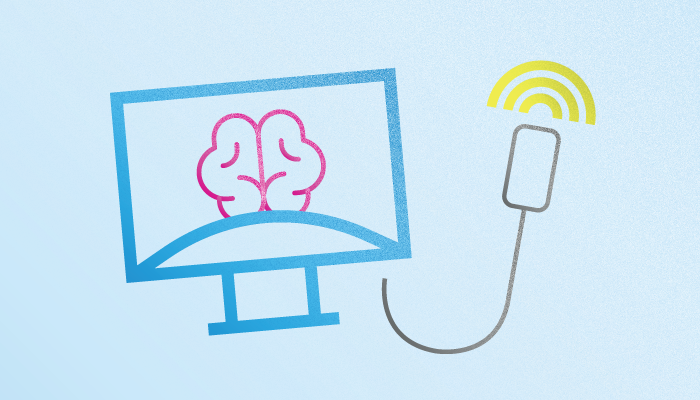Despite impressive achievements with newer therapeutic modalities, some diseases remain difficult adversaries. Perhaps the most publicized source of frustration among researchers and clinicians is the failure rate of drug candidates for Alzheimer’s disease (AD), which stands at a staggering 98 percent. Many factors, including the complexity of this disease, contribute to the challenges of crossing the drug approval finish line.
One significant roadblock for neurodegenerative diseases is the blood–brain barrier (BBB). This network of tightly connected endothelial cells that line capillaries in the brain not only protects this vital organ, but also limits the ability of therapeutics to reach their intended targets. It’s clear that new approaches are needed to overcome the unique challenges presented by diseases that affect the brain.
Enter focused ultrasound – a noninvasive technology that has the potential to transform the treatment of many medical disorders. Focused ultrasound can target tissue deep in the body, including beyond the BBB, without incisions or radiation. It has been approved by the FDA for nine indications to date, including essential tremor, Parkinson’s disease, prostate cancer, uterine fibroids, and pain from bone metastases. Globally, it has been approved for use in more than 30 indications and is in various stages of research and development for 180 conditions.
Focused ultrasound brings together two technologies that can do remarkable things. Ultrasound provides the energy to target the body precisely and noninvasively, while magnetic resonance or ultrasound imaging is used to identify and target the tissue to be treated, guide and control the treatment in real-time, and confirm treatment effectiveness.
When it comes to disrupting – or temporarily “opening” – the BBB, the mechanical effects of focused ultrasound (namely, cavitation) are put to work. In brief, ahead of the focused ultrasound procedure, microbubbles are injected into the bloodstream; during the procedure, these bubbles oscillate in the vessels and put pressure on the endothelium, forcing apart the tight junctions.

This method of BBB disruption is already associated with very promising results. Normally, only small molecules (typically <400 Da) with the proper charge and hydrophilicity can cross the BBB, but disruption of this barrier with focused ultrasound has enabled molecules as large as 150 kDa to cross (1). Among the many successes of focused ultrasound is its ability to open the BBB in AD and other neurodegenerative diseases. Lipsman and colleagues were the first to report the use of focused ultrasound plus microbubbles to safely and temporarily open the BBB in patients with AD by targeting areas of the right frontal lobe (2). Chang and colleagues reported similar results opening larger areas of the frontal lobes on both sides, and demonstrated decreased amyloid in these regions post procedure (3). Lipsman’s group also reported the ability of focused ultrasound to open the BBB in areas of the brain affected by amyotrophic lateral sclerosis (ALS) (4).
Earlier this year, a team at the West Virginia University Rockefeller Neuroscience Institute reported in the prestigious New England Journal of Medicine the use of focused ultrasound to open the BBB to accelerate the delivery of controversial drug aducanumab (5). (Notably, previous studies by Rezai reported that focused ultrasound can safely and reversibly open the BBB in other areas of the brain, such as the hippocampus and entorhinal cortex (6) – both of which are also affected by AD).
In the aducanumab study, PET scans of trial participants revealed a greater reduction in amyloid plaques in the ultrasound-treated regions of the brain compared with those same regions on the untreated side of the brain. These results suggest that more aducanumab was getting into the brain on the treated side. Clearance of plaques was accelerated by 32 percent, and the amount of plaque was reduced 50 percent more than control areas. And although aducanumab has been recently taken off the market due to its questionable efficacy, Rezai says he intends to continue his study with focused ultrasound BBB opening and a different drug.
In addition to neurodegenerative diseases, this breakthrough approach is also being studied in cancer. Many clinical trials are investigating the use of focused ultrasound to open the BBB and allow chemotherapeutic agents to more efficiently reach glioblastomas and other types of brain cancer (5).
I believe that the use of focused ultrasound will be essential to address some of our most challenging diseases. Focused ultrasound is already changing the way that neurosurgeons are approaching serious brain diseases like AD, Parkinson’s, and glioblastoma. This highly versatile technology offers new options for researchers and clinicians as they envision and advance breakthrough therapeutics with the potential to change lives.
References
- Focused Ultrasound Foundation, “Blood-Brain Barrier Opening.” Available here
- Focused Ultrasound Foundation, “First Alzheimer’s Trail with Focused Ultrasound Begins,” (2017). Available here
- F Wang, X-X Wei et al., “Ultrasound Combined With Microbubbles Loading BDNF Retrovirus to Open Blood–Brain Barrier for Treatment of Alzheimer’s Disease,” Front. Pharmacol., 12 (2021). DOI: 10.3389/fphar.2021.615104
- A Abrahao et al., “First-in-human trial of blood-brain barrier opening in amyotrophic lateral sclerosis using MR-guided focused ultrasound,” Nat. Commun., (2019). DOI: 10.1038/s41467-019-12426-9
- A Rezai et al., “Ultrasound Blood–Brain Barrier Opening and Aducanumab in Alzheimer’s Disease,” N Engl J Med, 390, 55-62 (2024). DOI: 10.1056/NEJMoa2308719
- AR Rezai et al., “Noninvasive hippocampal blood-brain barrier opening in Alzheimer’s disease with focused ultrasound,” Proc. Natl. Acad. Sci. U S A, (2020). DOI: 10.1073/pnas.2002571117
- Focused Ultrasound Foundation, “Brain Tumors, Glioma and Metastatic,” (2024). Available here




